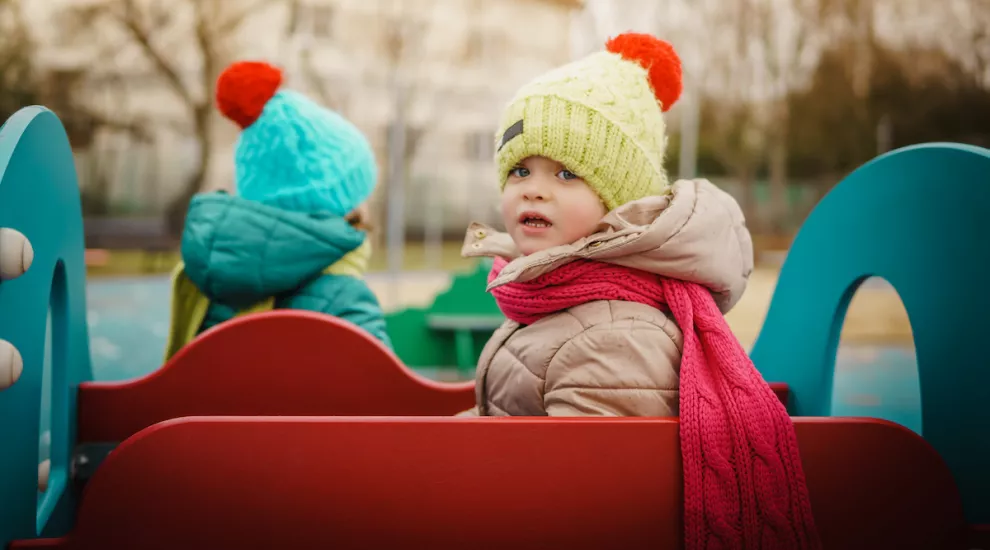
As South Carolinians, we like to brag about our mild winters; however, as we saw at the start of the New Year, we can’t always predict what the weather has in store for us. Did you know young children don’t always realize when they’re cold and can lose their natural body heat quickly because of their small size? As parents, it’s important to know how to keep our little ones safe and warm when surprisingly frigid days are upon us. Here are some tips from Duncan Norton, MD, Palmetto Health-USC General and Hospital Pediatrics.
-
Bundle them up. Okay, maybe not as extreme as poor little Randy in the movie A Christmas Story, but you want to make sure your children have several layers of clothing when they’re outside on cold days. Layers are important because, as temperatures rise during the afternoon, your children may discard their jackets and forget to put them back on when it gets cold again. If they are dressed in layers, they still will have some protection from the cold. With younger children, beware of scarves and hood strings, which can turn into strangulation hazards.
Infants have thinner skin and are especially sensitive to temperature changes. Their little hands should be covered with mittens and their feet should be doubly protected by socks and shoes or footed buntings. Infants tend to lose a lot of body heat from their heads, so they should wear a hood or knitted cap. Babies can’t regulate their heat as well as adults and can easily overheat. To gauge your baby’s temperature, check the nape of his/her neck. If it feels hot, you may remove a layer of clothing. If it’s cool to the touch, add a layer.
-
Monitor them throughout the day. When playing in the snow, children can get wet and cold without realizing it. Check in on them to make sure they know the importance of staying warm and dry.
-
Keep them hydrated. The air is dryer in the wintertime and can lead to faster dehydration. Keep your children hydrated throughout the day with plenty of water. You also may tempt them with warm drinks and soup.
-
Watch for winter nosebleeds. Low humidity in cold outdoor air alternating with heated indoor air can cause the membrane of your child’s nasal passages to become dry and cracked. This can lead to a winter nosebleed. Not every child suffers from this, but if yours does, you may use saline nose drops to keep their nasal passages moist, or you may set up a humidifier in their room.
-
Warm, not hot, baths and showers. Our tendency is to take long, hot baths and showers, especially when it’s cold outside, but it’s not always the best practice. Long showers or baths can increase the risk of developing dry skin. The best rule is to keep showers brief and in warm, not hot, water.
For more health tips, visit Palmetto Health.

